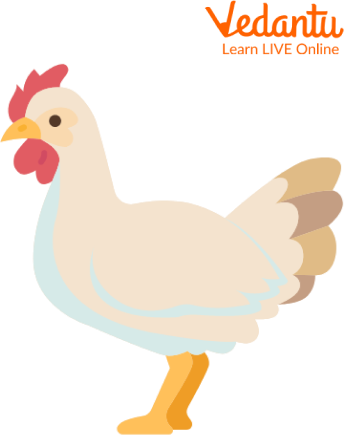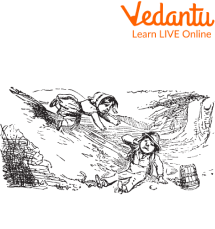Overview of the Mother Goose Nursery
Nursery rhymes by Mother Goose have been a family favourite for a long time and have been passed down from generation to generation. The poems of Mother Goose are among the most well-known ones today. The most well-known Mother Goose nursery rhymes with English lyrics are listed below so that you can learn them and sing along with your children. So let’s sing these catchy mother-goose nursery rhymes together!
The Theme of the Poem
Children have been reading Mother Goose nursery rhymes for decades; such rhymes discuss the moral and material future of children. It uses a wide variety of figures of speech and tones to describe the various parts of childhood. The tone of the Mother Goose nursery rhyme is consistently positive.
Famous nursery rhyme author Mother Goose was able to use the appealing rhyme pattern across the entire poem "Mother Goose Nursery Rhyme." The poem first may appear to be a straightforward and generally lighthearted work, but it actually has an undertone of humanity's fast judgement.
About the Author
The most well-known unnamed "author" of well-known children's nursery rhymes is Mother Goose. Charles Perrault, who invented the fairy tale genre and originally used her name in a work whose subtitle became known as Tales of My Mother Goose, deserves credit for fabricating her (1695).
Over the centuries, countless versions of nursery rhymes have been told and illustrated. American Literature has chosen what we believe to be the best: William Wallace Denslow's Mother Goose by Anonymous (1901) for its cherubic, mischievous, and sentimental illustrations of well-loved nursery rhymes.
Enjoy his collection of children's short stories in American Literature. Ideal for reading, chanting or singing with your favourite kids, or as bedtime stories. Take time to reflect and explore Pre-K Wordplay. , and lullabies from around the world when it's time for bed.
Mother Goose Nursery Rhymes List
Some printable mother goose nursery rhymes are shared below. Read out loud these mother-goose nursery rhymes.
1. Are You Sleeping
Are you sleeping?
Are you sleeping?
Brother John?
Brother John?
Morning bells are ringing.
Morning bells are ringing.
Ding, ding, dong.
Ding, ding, dong.

Mother Goose the Mascot
2. Banbury Cross
Ride a cock-horse to Banbury Cross
To see a fine lady upon a white horse.
With rings on her fingers and bells on her toes
She shall have music wherever she goes.
3. Birds of a Feather
Birds of a feather flock together,
And so will pigs and swine.
Rats and mice have their choice,
And so will I have mine.
4. Cock-A-Doodle-Do
Cock-a-doodle-doo,
My dame has lost her shoe.
My master’s lost his fiddlestick,
And knows not what to do.

Cock a Doodle Doo
5. Jack and Jill
Jack and Jill
Went up the hill
To fetch a pail of water.
Jack fell down
And broke his crown
And Jill came tumbling after.

Jack and Jill went up the Hill
Fun Facts about Mother Goose Nursery Rhymes
Some people believe that Mother Goose is the author of several children's songs and nursery rhymes. She is frequently shown as an elderly woman flying on a goose's back. But whether Mother Goose ever lived is unknown to experts.
One legend claims that Elizabeth Goose was the real Mother Goose. In the 1600s, she resided in Boston, Massachusetts. Some people think that the Mother Goose stories we are all acquainted with today are based on the rhymes she created for her grandkids. However, no evidence that she actually wrote the stories has been discovered.
Summary
The phrase "Mother Goose" refers to a large category of nursery rhymes and stories that are typically written with young children or beginning readers in mind. The rhymes appear to have a common shape, goal, and distinctive tone at first glance, but beyond these fundamental characteristics, they truly represent a broad mix of lyrical stories that have little in common. The stories we think of as the classical Mother Goose rhyme are actually a collection of contradictory folk tales, poetry, and creative exercises that have a prototype sound and duration but differ greatly in origin, age, and content. The rhymes are frequently taught to young kids as their first introduction to literature, and it is believed that doing so will teach them how to express their ideas in a coherent manner through language.


FAQs on Mother Goose Nursery Rhymes
1. What separates nursery rhymes from those by Mother Goose?
Short songs and poems that are frequently read or sung to young children can be roughly categorised as nursery rhymes, also referred to as Mother Goose rhymes. Although works by well-known authors have also been referred to as nursery rhymes, these verses are typically anonymous.
2. What is the real name of Mother Goose?
She was either Mary Goose, who died in 1690 at the age of 42 or Elizabeth Foster Goose, who lived from 1665 to 1758. Both are buried on Tremont Street. The original Mother Goose was this woman, claimed Boston travel and history writer Eleanor Early in the 1930s and 1940s.
3. Was the author of this poem ‘Mother Goose’ a genuine person?
You might be disappointed to learn that most historians believe the "Mother Goose" author was a fictional character in response to your question. The name was probably chosen as a kind of generic appellation for a person who resembled an "everywoman."





